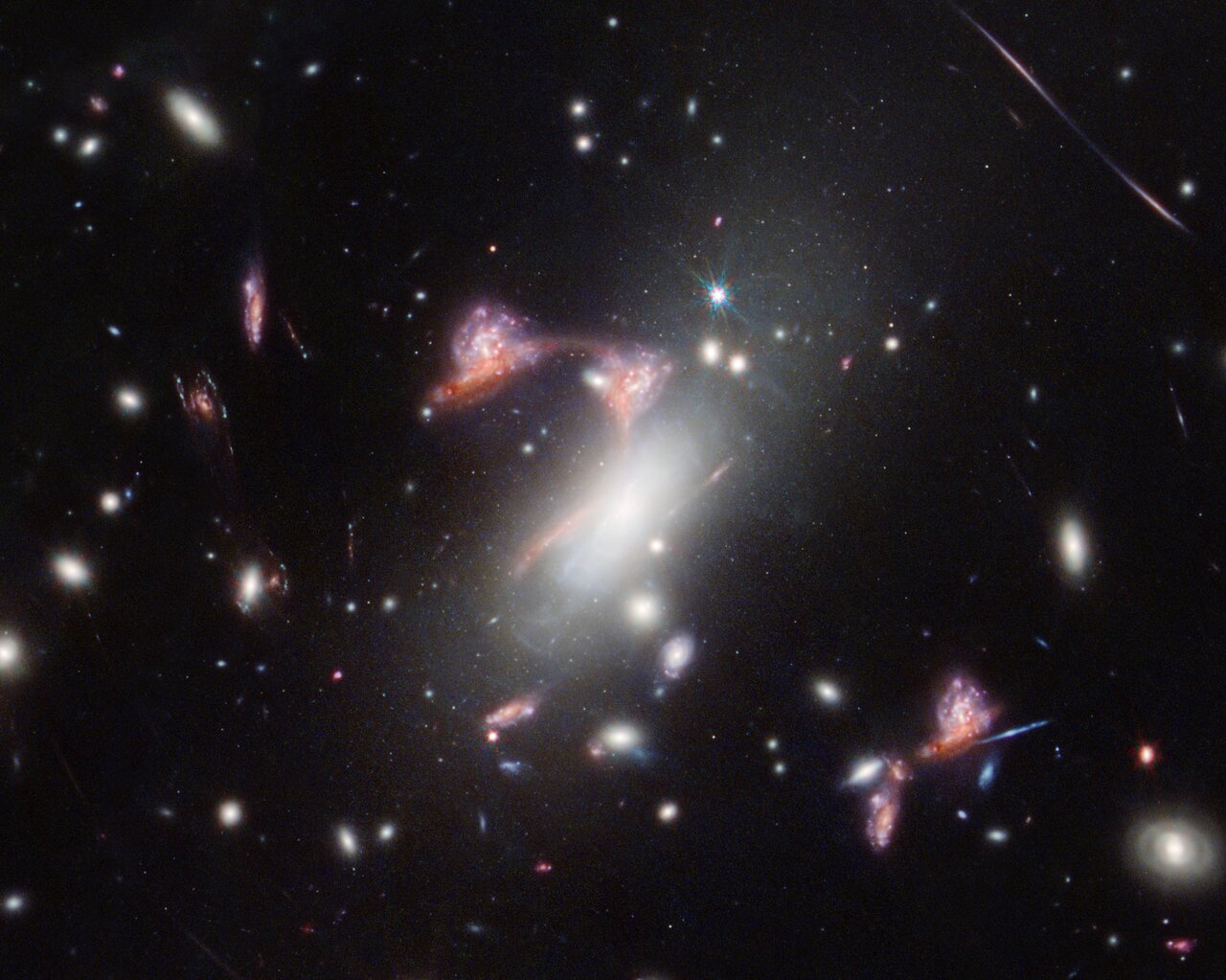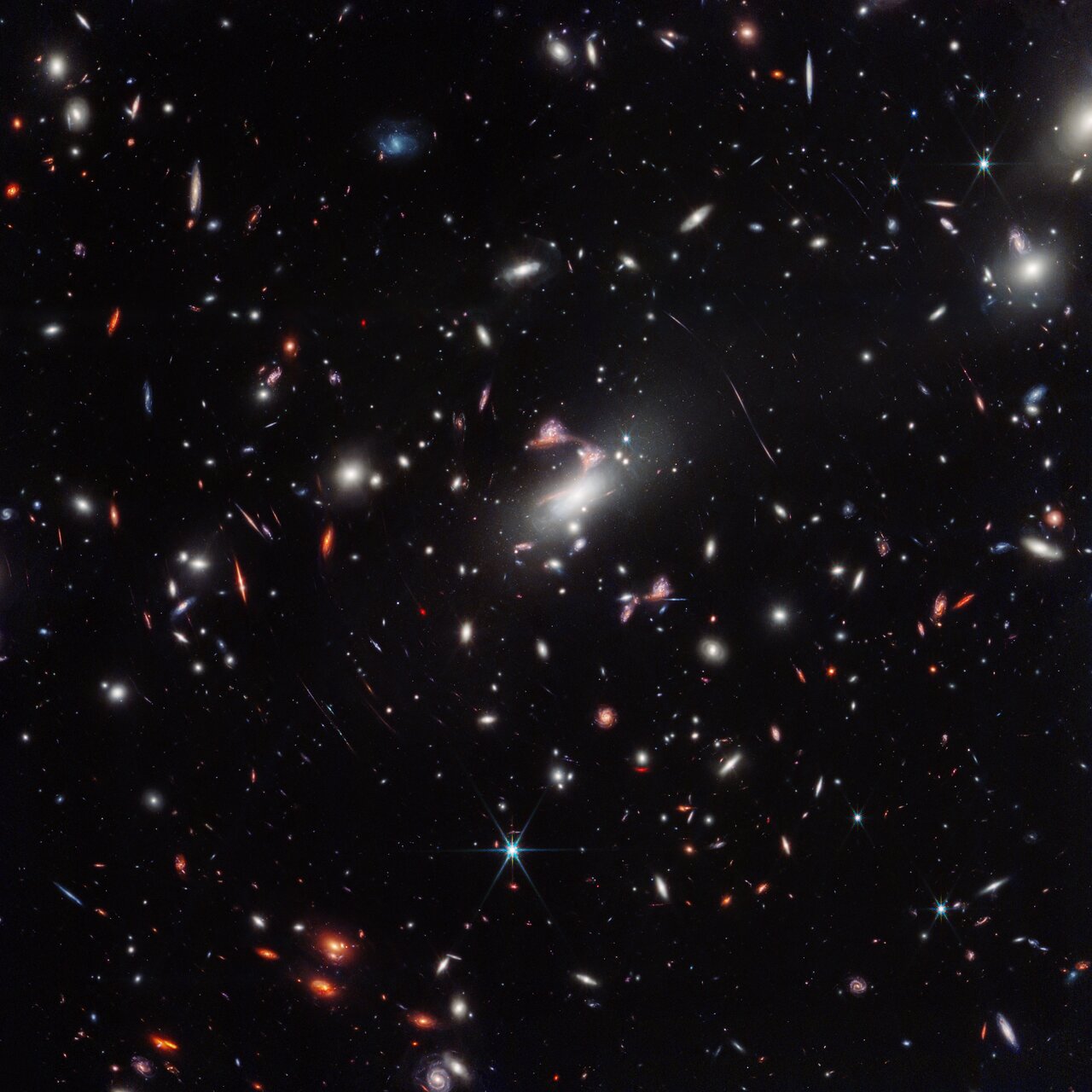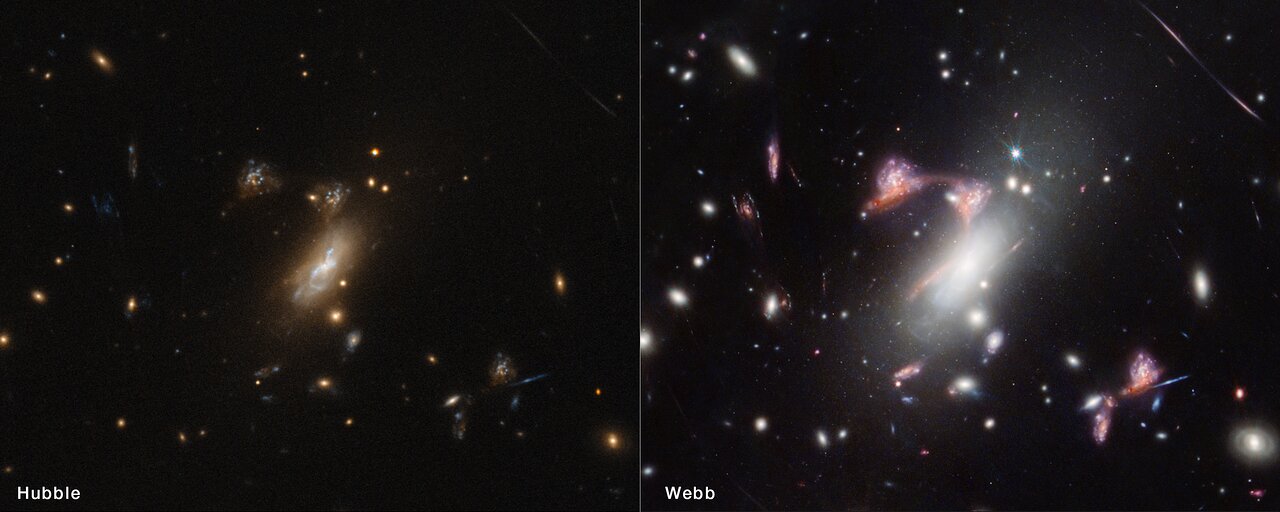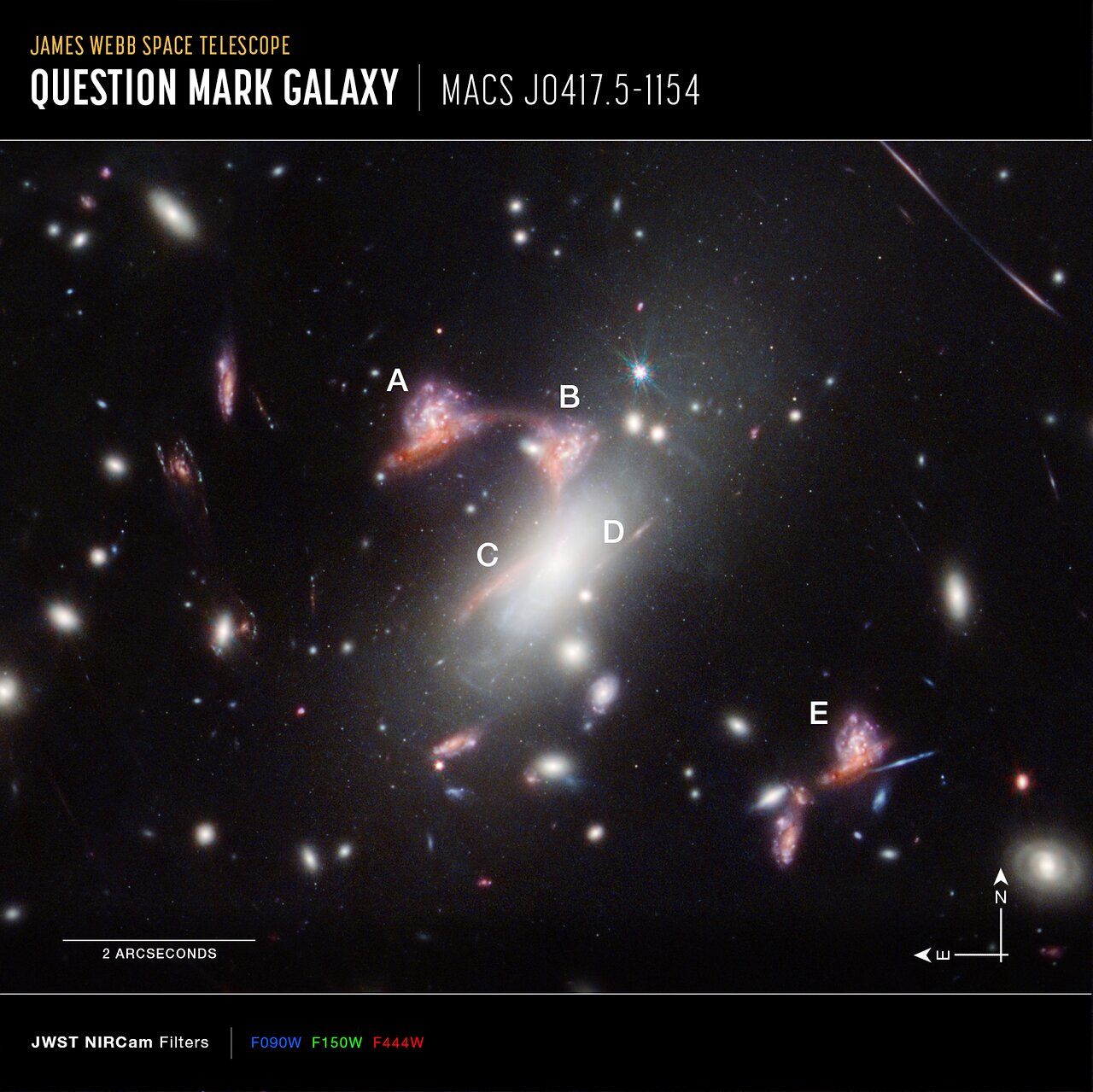James Webb Space Telescope Discovery
Clicking on each image will open the full resolution one. Try it!Clicking on "Raw images" image will yield all the relevant raw images.
Question Mark Galaxy
The galaxy cluster MACS-J0417.5-1154 is so massive it is warping the fabric of space-time and distorting the appearance of galaxies behind it, an effect known as gravitational lensing. This natural phenomenon magnifies distant galaxies and can also make them appear in an image multiple times, as NASA’s James Webb Space Telescope saw here. Two distant, interacting galaxies — a face-on spiral and a dusty red galaxy seen from the side — appear multiple times, tracing a familiar shape across the sky. Active star formation, and the face-on galaxy’s remarkably intact spiral shape, indicate that these galaxies’ interaction is just beginning.
Credit: ESA, NASA, CSA, STScI, V. Estrada-Carpenter (Saint Mary’s University)
 Lensed Question Mark Galaxy (NIRCam)
Lensed Question Mark Galaxy (NIRCam)
 A cosmic question mark appears amid a powerful gravitational lens in the James Webb Space Telescope’s wide-field view of the galaxy cluster MACS-J0417.5-1154. Gravitational lensing occurs when something is so massive, like this galaxy cluster, that it warps the fabric of space-time itself, creating a natural funhouse-mirror effect that also magnifies galaxies behind it.
The rarely seen type of lensing captured here, which astronomers term hyperbolic umbilic, created five repeated images of one galaxy pair. The red, elongated member of this pair traces the familiar shape of a question mark across the sky due to the distortion, with another unrelated galaxy happening to be in just the right space-time to appear like the question mark’s dot – especially for humans who love to recognize familiar shapes and patterns.
A cosmic question mark appears amid a powerful gravitational lens in the James Webb Space Telescope’s wide-field view of the galaxy cluster MACS-J0417.5-1154. Gravitational lensing occurs when something is so massive, like this galaxy cluster, that it warps the fabric of space-time itself, creating a natural funhouse-mirror effect that also magnifies galaxies behind it.
The rarely seen type of lensing captured here, which astronomers term hyperbolic umbilic, created five repeated images of one galaxy pair. The red, elongated member of this pair traces the familiar shape of a question mark across the sky due to the distortion, with another unrelated galaxy happening to be in just the right space-time to appear like the question mark’s dot – especially for humans who love to recognize familiar shapes and patterns.
 NASA’s Hubble Space Telescope has also observed the galaxy cluster MACS-J0417.5-1154, but the dusty red galaxy that appears multiple times to form a question mark shape is much more prominent in the Webb image. The infrared light that Webb detects is better able to pass through the cosmic dust of its home galaxy to reach the telescope. Astronomers used Hubble’s ultraviolet observations to help determine where star formation is happening in both the red galaxy and its close companion, a face-on spiral galaxy.
NASA’s Hubble Space Telescope has also observed the galaxy cluster MACS-J0417.5-1154, but the dusty red galaxy that appears multiple times to form a question mark shape is much more prominent in the Webb image. The infrared light that Webb detects is better able to pass through the cosmic dust of its home galaxy to reach the telescope. Astronomers used Hubble’s ultraviolet observations to help determine where star formation is happening in both the red galaxy and its close companion, a face-on spiral galaxy.
 A specific type of gravitational lensing known to astronomers as hyperbolic umbilic, captured in the James Webb Space Telescope’s image of galaxy cluster MACS-J0417.5, results in the optical illusion of five multiples of one distant galaxy pair, labelled here as A, B, C, D, and E. While the pair exists once in reality, it appears five times when viewed through the funhouse mirror of warped space created by the mass of the cluster. Image D is largely obscured behind the bright white glare of one of the cluster galaxies.
This image also includes compass arrows, scale bar, and colour key for reference. The scale bar is labelled in arcseconds, which is a measure of angular distance on the sky. There are 60 arcminutes in a degree and 60 arcseconds in an arcminute. (The full Moon has an angular diameter of about 30 arcminutes.) The actual size of an object that covers one arcsecond on the sky depends on its distance from the telescope.
This image shows infrared wavelengths of light that have been translated into visible-light colours. The colour key at the bottom of the image shows which filters from Webb’s NIRCam (Near-Infrared Camera) instrument were used. The colour of each filter name is the visible light colour assigned to represent the infrared light detected by that filter.
A specific type of gravitational lensing known to astronomers as hyperbolic umbilic, captured in the James Webb Space Telescope’s image of galaxy cluster MACS-J0417.5, results in the optical illusion of five multiples of one distant galaxy pair, labelled here as A, B, C, D, and E. While the pair exists once in reality, it appears five times when viewed through the funhouse mirror of warped space created by the mass of the cluster. Image D is largely obscured behind the bright white glare of one of the cluster galaxies.
This image also includes compass arrows, scale bar, and colour key for reference. The scale bar is labelled in arcseconds, which is a measure of angular distance on the sky. There are 60 arcminutes in a degree and 60 arcseconds in an arcminute. (The full Moon has an angular diameter of about 30 arcminutes.) The actual size of an object that covers one arcsecond on the sky depends on its distance from the telescope.
This image shows infrared wavelengths of light that have been translated into visible-light colours. The colour key at the bottom of the image shows which filters from Webb’s NIRCam (Near-Infrared Camera) instrument were used. The colour of each filter name is the visible light colour assigned to represent the infrared light detected by that filter.